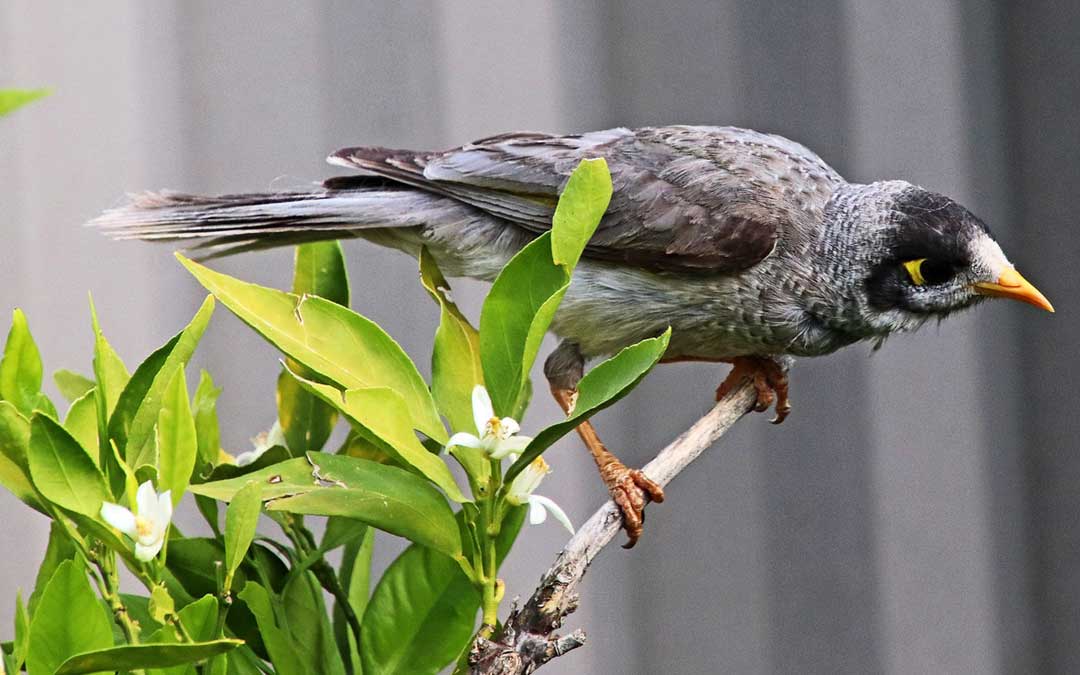The noisy miner problem

In our backyards and parks, there’s a bird causing quite a ruckus: the noisy miner (Manorina melanocephala). These birds are indigenous but have very much made themselves at home in urban environments. Unfortunately, they’re not very friendly neighbours and have become a pest. They’re pushy and aggressive, and they’re taking over territory, making survival harder for other indigenous birds. If you haven’t seen noisy miners being bullies you will have certainly heard them – because they really live up to their name. Noisy miners should not be confused with the introduced Indian mynah.
Why are they such bullies?
Noisy miners live in large social groups, and are all about defending what they think is theirs. They don’t like sharing, especially when it comes to food and places to live. They’ll gang up on other birds (which often live solo or in pairs so are vastly outnumbered), sometimes hurting or killing them, just to keep them away. This means other birds have to fight for every scrap of food and every place to build a nest. Mobs of noisy miners regularly gang up on much bigger birds including magpies and little ravens with success.
The problem is that due to habitat loss in urban areas, many of our indigenous birds are competing with noisy miners and are far less aggressive about defending their habitat. They need dense bushes and trees to nest in and find food. Noisy miners have adapted extremely well to living in the suburbs. They are especially fond of the prolifically flowering Australian natives such as grevilleas, callistemons and flowering gums that many of us have in our gardens. While they are a type of honey-eater noisy miners are omnivorous and will also eat fruits, insects, and occasionally frogs and small reptiles. They are also opportunistic feeders and will even eat pet food left outside. Noisy miners form mobs: dive-bomb other birds, forcing them out while hogging these nesting spots and food sources. Other birds, especially smaller and less aggressive species like fairy-wrens, fantails, thornbills, pardalotes and silvereyes are finding it harder and harder to survive and are declining.
Why should we care?
When indigenous birds struggle, it’s not just a problem for them—it’s a problem for us too. Birds play important roles in keeping other parts of our natural world healthy. They pollinate plants, control pests, and bring joy with their looks, behaviour and their song. If we lose them, we lose a big part of what makes living in leafy urban areas like Macleod special, and a crucial link in nature’s elaborately interlinked ecosystems.
What can we do about it?
We need to step up and do what little we can to help our other indigenous birds. That means creating more places for them to live and find food. Planting indigenous ground covers, grasses and small shrubs with smaller delicate flowers and seeds can create a better opportunity for smaller indigenous birds to find a niche in our gardens.
You can also take part in citizen scientist bird counts, such as the Birdlife Backyard Bird Count (Autumn count now on), to contribute to valuable scientific data so scientists can make better decisions.
Words by Jen Willis
